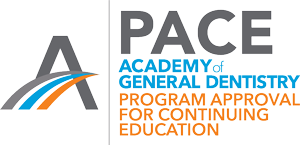 BUYING FOR OTHERS?
Click here to buy for others.
BUYING FOR OTHERS?
Click here to buy for others.Sedation in Pediatric Dentistry
Explore research on the types of sedation and their effects on children’s behavior; plus review actual cases of adverse events related to the use of sedation on pediatric patients.
Course Overview
Dentists may use different sedative agents and types of sedation on their pediatric patients for various reasons — and with different effects. This set of articles gathers research on the effects of different types of sedation on children’s behavior and looks at actual cases of adverse events related to the use of sedation on pediatric patients.
You’ll learn the factors that should or should not be considered regarding the use of nitrous oxide as a sedation technique, understand behavioral characteristics and side effects in children under deep sedation, gain greater knowledge about adverse events related to child sedation and anesthesia, and more. When you complete the articles and pass the assessment, you’ll earn 12 CE credits.
Course Credentials
Course Compatibility
Desktop, laptop and tablet
AGD Code: 340
After completing all of the articles, you will be able to:
- Understand behavioral characteristics and side effects in children undergoing restorative dental treatment with or without dental extractions under deep sedation
- Determine if there were differences in the amount of time it took for a patient to exhibit positive behavior following dental treatment under general anesthesia versus conscious sedation
- Cite descriptive data of adverse events related to child sedation and anesthesia in the dental office
- Describe the occurrence of aspiration of a stainless steel crown in a 5-year-old boy during conscious sedation, and how a prompt and accurate diagnosis, early referral, and immediate treatment helped prevent serious complications
- Cite factors that should or should not be considered regarding the use of nitrous oxide as a sedation technique
Subject Matter Experts

The DALE Foundation is an ADA CERP Recognized Provider. ADA CERP is a service of the American Dental Association to assist dental professionals in identifying quality providers of continuing dental education, ADA CERP does not approve or endorse individual courses or instructors, nor does it imply acceptance of credit hours by boards of dentistry. Concerns or complaints about a CE provider may be directed to the provider or to ADA CERP at ada.org/cerp.

